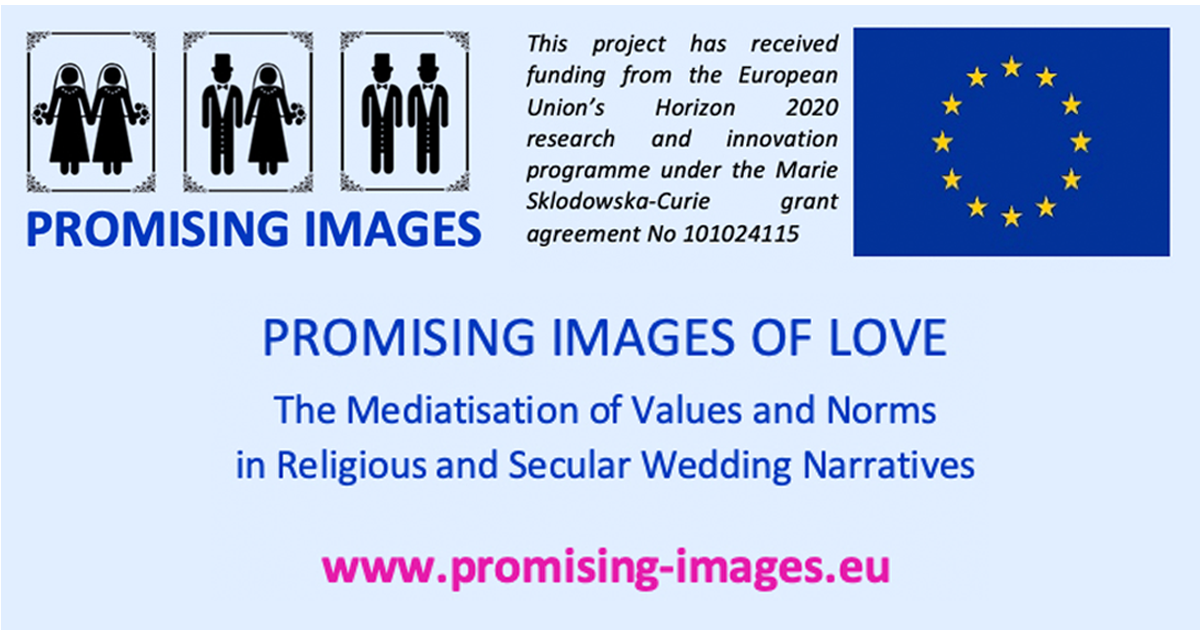- 0.6Impact Factor
- 1.3CiteScore
- 26 daysTime to First Decision
Promising Images of Love: Religion, Norms, and the Mediatisation of Weddings
This special issue belongs to the section “Religions and Humanities/Philosophies“.
Special Issue Information
Dear Colleagues,
We invite you to contribute to this Special Issue titled “Promising Images of Love: Religion, Norms, and the Mediatisation of Weddings”, which focuses on weddings and their diverse representions, performances, and meanings in historical and contemporary perspectives. Weddings are understood as rites de passage (van Gennep, 2019) that are performed in religious traditions and many cultures of the past and in the present. The religious significance of rites of passage is manifested by symbolically transforming the social status of the individuals (the wedding couple), enabling them to transcend the everyday world. Thereby, a general order of existence (family, gender, status) is expressed and reconfigured (Geertz, 1993, 90). The actual wedding rituals are as diverse as each cultural–religious context; they adapt to them, and change over the course of time. At the same time, some traditional elements are also passed on.
The focus of this Special Issue “Promising Images of Love” is the ways in which weddings mediate values that are often highly normative in reference to specific religious traditions. Norms in this context are understood as guidelines to act by, which express specific values and justify normative acts. Values and norms in wedding practices are numerous, complex, and interlinked on several levels, notably social, political, cultural, historical, and economic.
This Special Issue invites authors to scrutinize how wedding practices enclose and reshape different religious norms and values as well as stereotypes with the intent to highlight the performativity of their mediatisation. Mediatisation in the current approach is understood as the interaction between culture, including religion and the media, in a broad sense that comprises all kinds of artefacts of material and visual culture such as images, films, fashion, and architecture. Mediatisation describes the interaction of these two areas and how they adapt to and transform one other.
The following questions are central to the Special Issue’s focus:
- How can we approach weddings on a theoretical level as a rite de passage?
- Which norms and values form the basis of historical and contemporary wedding practices and representations?
- How is gender constructed in wedding practices understood as religious?
- Which social, political, cultural, and economic norms and values are expressed in religious wedding representations and practices? How do they change adapt and transform over time?
- How do wedding specialists and political–economic factors influence the performative dimensions of the rite de passage?
- What does the future of religious weddings look like?
Reference
Geertz, Clifford. Religion as Cultural System, in The Interpretation of Cultures: Selected Essays. London: Fontana Press, 1993.
van Gennep, Arnold. The Rites of Passage. Second edition. Chicago: The University of Chicago Press, 2019.
Ingraham, Chrys. White Weddings Romancing Heterosexuality in Popular Culture. 2nd ed. New York: Routledge, 2008.
Lebe, Reinhard. Ein Königreich als Mitgift: Heiratspolitik in der Geschichte. Bd. 30792. Dtv. München: DtTaschenbuch-Verl, 2000.
Schäffler, Hilde. Ritual als Dienstleistung: die Praxis professioneller Hochzeitsplanung. Berlin: Reimer, 2012.
Williams, Lucy. Global Marriage: Cross-Border Marriage Migration in Global Context. Migration, Minorities & Citizenship. Basingstoke: Palgrave Macmillan, 2010.
Witte, John. The Western Case for Monogamy over Polygamy. Cambridge Studies in Law and Christianity. New York, NY: Cambridge University Press, 2015.
Dr. Marie-Therese Mäder
Dr. Anna-Katharina Höpflinger
Guest Editors
Manuscript Submission Information
Manuscripts should be submitted online at www.mdpi.com by registering and logging in to this website. Once you are registered, click here to go to the submission form. Manuscripts can be submitted until the deadline. All submissions that pass pre-check are peer-reviewed. Accepted papers will be published continuously in the journal (as soon as accepted) and will be listed together on the special issue website. Research articles, review articles as well as short communications are invited. For planned papers, a title and short abstract (about 250 words) can be sent to the Editorial Office for assessment.
Submitted manuscripts should not have been published previously, nor be under consideration for publication elsewhere (except conference proceedings papers). All manuscripts are thoroughly refereed through a double-blind peer-review process. A guide for authors and other relevant information for submission of manuscripts is available on the Instructions for Authors page. Religions is an international peer-reviewed open access monthly journal published by MDPI.
Please visit the Instructions for Authors page before submitting a manuscript. The Article Processing Charge (APC) for publication in this open access journal is 1800 CHF (Swiss Francs). Submitted papers should be well formatted and use good English. Authors may use MDPI's English editing service prior to publication or during author revisions.
Keywords
- weddings
- religions
- values
- norms
- mediatisation
- tradition
- transformation

Benefits of Publishing in a Special Issue
- Ease of navigation: Grouping papers by topic helps scholars navigate broad scope journals more efficiently.
- Greater discoverability: Special Issues support the reach and impact of scientific research. Articles in Special Issues are more discoverable and cited more frequently.
- Expansion of research network: Special Issues facilitate connections among authors, fostering scientific collaborations.
- External promotion: Articles in Special Issues are often promoted through the journal's social media, increasing their visibility.
- e-Book format: Special Issues with more than 10 articles can be published as dedicated e-books, ensuring wide and rapid dissemination.

